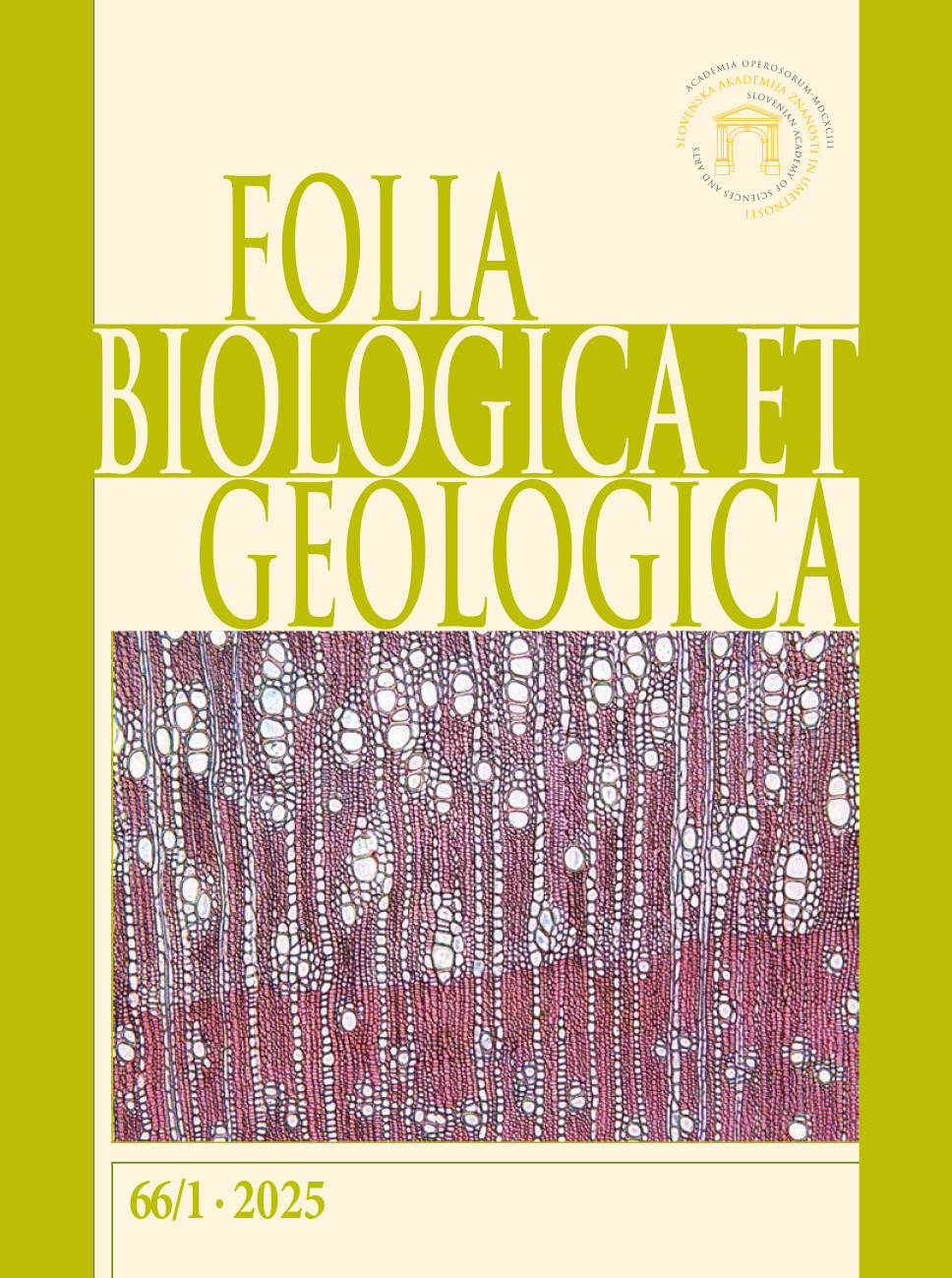Characteristics of wood increments in stem and branches of olive trees (Olea europaea L.)
DOI:
https://doi.org/10.3986/fbg0113Keywords:
wood, growth ring boundary, diffuse-porous species, vessel, anatomy, conductivity, light microscopyAbstract
Olive (Olea europaea L.) is an economically very important evergreen cultivated plant, but very little is known about its wood structure in the different tree parts, which is crucial for the long-term tree survival. Here, we compared the characteristics of xylem increments in the stem and branches of the olive trees in Dekani in 2016. We analyzed the conducting elements in the wood (vessels) in individual thirds of the xylem increments. For this purpose, xylem samples were taken after the end of the growing season of 2016 and histometric analyzes of the xylem tissue were performed using a light microscope and an image analysis system. The width of the xylem increments and the vessel characteristics differed in the stem and branches of the olive trees. The increments were about 54 % narrower in the branches than in the stem, and the vessel areas were between 25 % (first third) and 34 % (last third) smaller. Vessel areas were comparable in the first and second thirds of the xylem increment, while it was significantly smaller in the last third, on average by 17.6 % in the stem and 25.4 % in the branches. In all thirds of the xylem increments, we observed a negative relationship between average vessel area and vessel density. In the stem and branches of olive trees, this was reflected in comparable values of hydraulic conductivity in all xylem thirds. Narrower conducting elements in olive branches, as a result of hormonal regulation, are consistent with the universal positive relationship between vessel size and distance from the apex and are associated with higher tension of the water columns the vessels in the branches compared to the stem. The different structure of the xylem increments in the stem and branches indicates the different role of this tissue in different parts of the olive trees.





